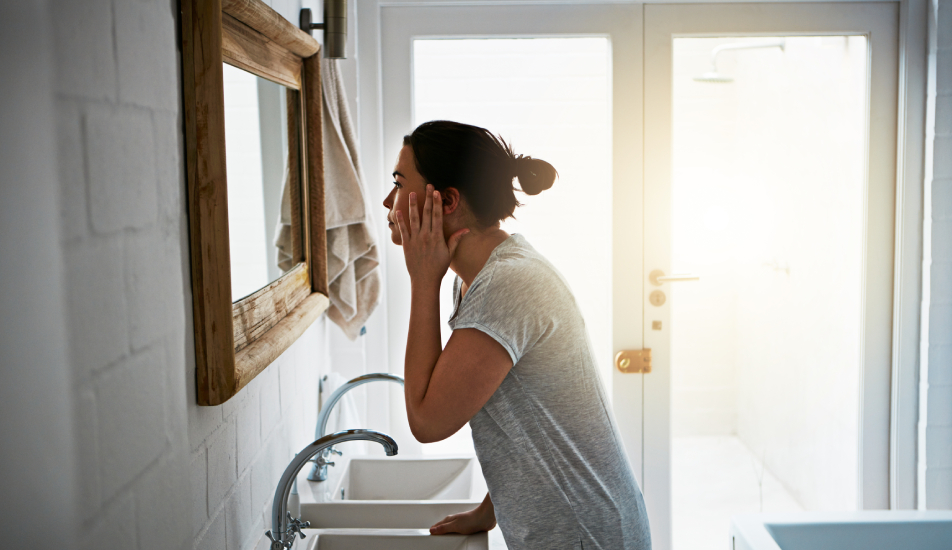
Cold Sores Symptoms
Feeling a tingle on your lips or seeing some strange little blisters develop? It could well be a cold sore on the way! Whether it’s your very first time or you’re a seasoned cold sore veteran, it’s always good to know what to expect when an unsightly cold sore makes an appearance.
What are the symptoms of cold sores?
That may seem like a simple question, but signs and symptoms of a cold sore can be different depending on whether it’s the first time you’ve had one or whether it’s a recurrence. The other thing to know is that cold sores usually pass through several stages. So, the answer to what does a cold sore look like – and what does a cold sore feel like – really depends on what stage it’s at. And while an entire cold sore outbreak may last up to 2 weeks, a particular cold sore symptom may only be present for a short period of time at a given stage.
First-time vs recurrent cold sore symptoms
Cold sores are caused by an infection with the herpes simplex virus type 1 (or HSV-1). This is why cold sores are sometimes called oral herpes. You can find out more about how HSV-1 infections spread and cause cold sores here. For most people, their first outbreak of cold sores occurs when they first get infected with HSV-1 – this is known as the primary infection. After this first episode, the virus becomes latent or inactive until something causes it to become active again. Discover some common triggers for HSV-1 reactivation and cold sore flare-ups here.
When people have a primary HSV-1 infection, they often experience a range of signs and symptoms beyond a cold sore on the lips. These typically appear within 2 weeks of exposure to the virus and can last up to 2 weeks. Symptoms can include:
- Swollen or painful gums
- Sores inside the mouth (ulcers or blisters)
- Sore throat
- Swollen neck glands
- Fever
- Tiredness
- Headache
During this first outbreak, children are more likely to develop mouth sores while adults often develop a sore throat. During recurrent cold sore infections, the cold-like symptoms are much less likely to occur, and most people only get the visible cold sore.
Where do cold sores occur?
The most common location for a cold sore to develop is on or around your lips. More specifically, they frequently occur on what’s called the vermillion border where the edges of your lips meet the skin around your lips. Cold sores can sometimes form in other locations on the face, so you might hear someone complain about a cold sore on their nose, a cold sore in their mouth, or even a cold sore on their tongue.
For people who get cold sores frequently, they often develop or recur in the same location. For example, if your first cold sore happened to form on the edge of your bottom lip near the left-hand corner of your mouth, then there’s a good chance that your next cold sore will also form in the same spot.
Cold sore early stage
*Wald A, Johnston C. Treatment and prevention of herpes simplex virus type 1 in immunocompetent adolescents and adults [June 2022]. In: Hirsch MS (Ed). UpToDate. Waltham, MA; 2022.
Cold sore blister stage
The first visible sign of a developing cold sore is the appearance of one or more small blisters. The area where these blisters form is often painful or tender, giving off a burning or stinging sensation. The cold sore blisters continue to grow/develop over a few days and then usually burst or begin weeping. Again, the area may be painful or tender during this stage.
Cold sore healing stage
Once the blisters have burst, the cold sore starts to ooze and develop a crusty layer on the top. While an oozing and crusty cold sore doesn’t sound particularly attractive, this actually marks the start of the cold sore healing stage. The crust eventually dries out and forms a scab that heals and goes away in around 10 days.
How can I manage cold sore symptoms?
When a cold sore makes an unwanted appearance, there’s no avoiding its progress through the stages of tingling, blistering, weeping, and scabbing. However, there are some easy ways to take care of yourself and your cold sore to help your recovery, and it’s also important to follow good hygiene practices to help prevent spreading the virus – learn more here.
And when you’re looking for a cold sore treatment that has you covered from start to end, discover how the triple-action formula of VIRASOLVE® Cold Sore Cream can help relieve symptoms at every stage of your cold sore here.
Always read the label and follow directions for use.
Cold sore symptoms FAQs
After that first tingly or itchy feeling that signals that a cold sore is on the way, the cold sore will usually appear within one to two days.
When cold sore blisters develop and when these blisters start to burst or weep, the affected area can become painful and tender.
Cold sores typically last for around 10 to 14 days, typically progressing from the initial tingle to blisters over the first few days before forming a weeping, crusting layer that dries into a scab. The scab heals gradually over a week or so.
Generally, cold sores don’t leave scars. However, some people may experience some scarring if they pick at scabs or break blisters.
You should talk to your doctor if you have any concerns about your cold sore, or if your cold sore becomes infected, is not healing, or spreads to other areas. You may also want to discuss your symptoms with your doctor if you experience severe or frequent cold sores.
